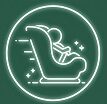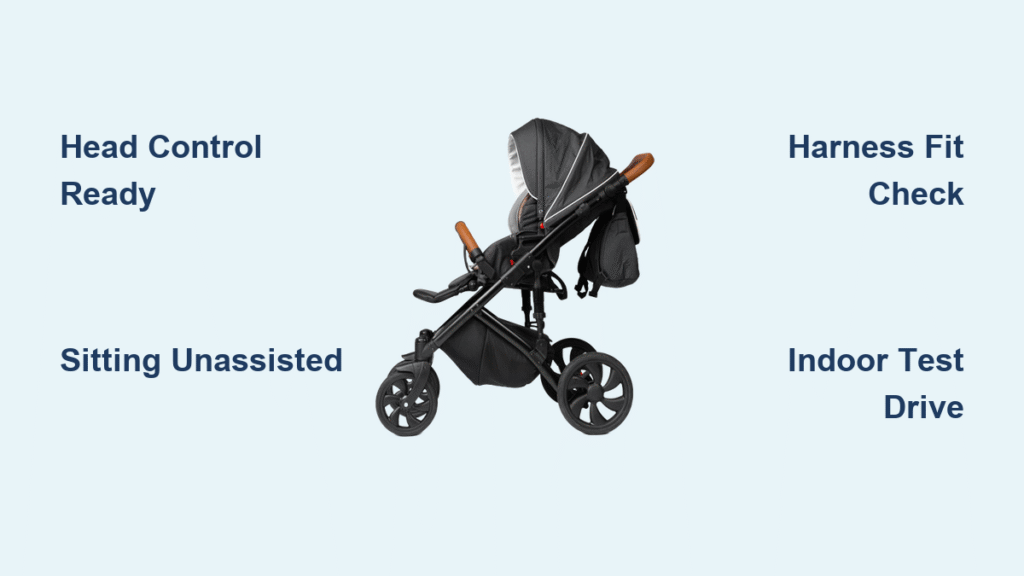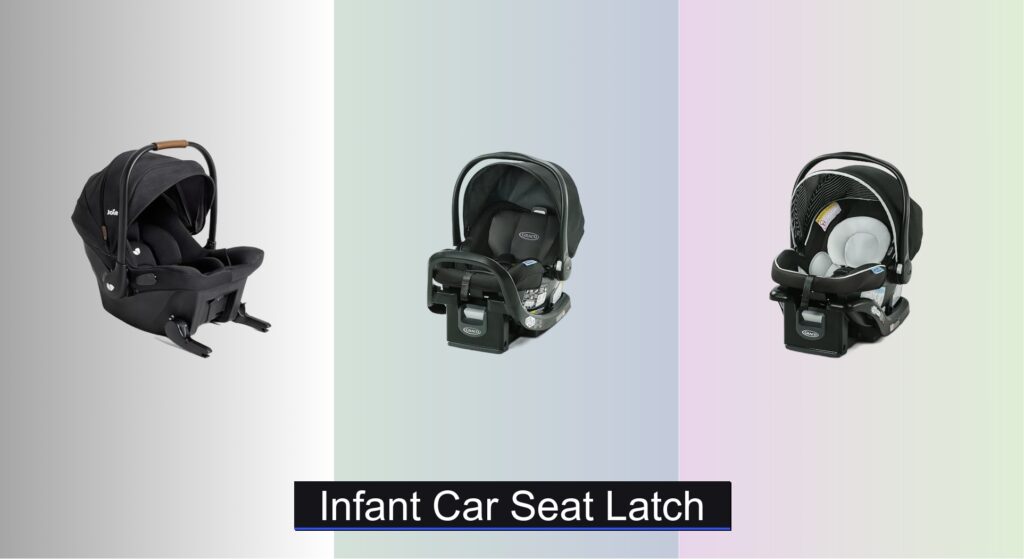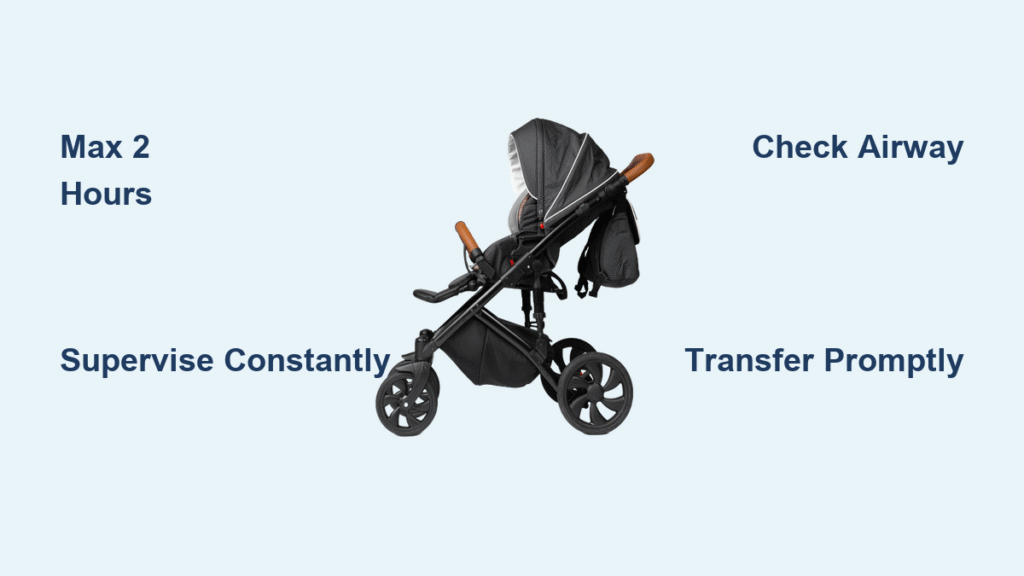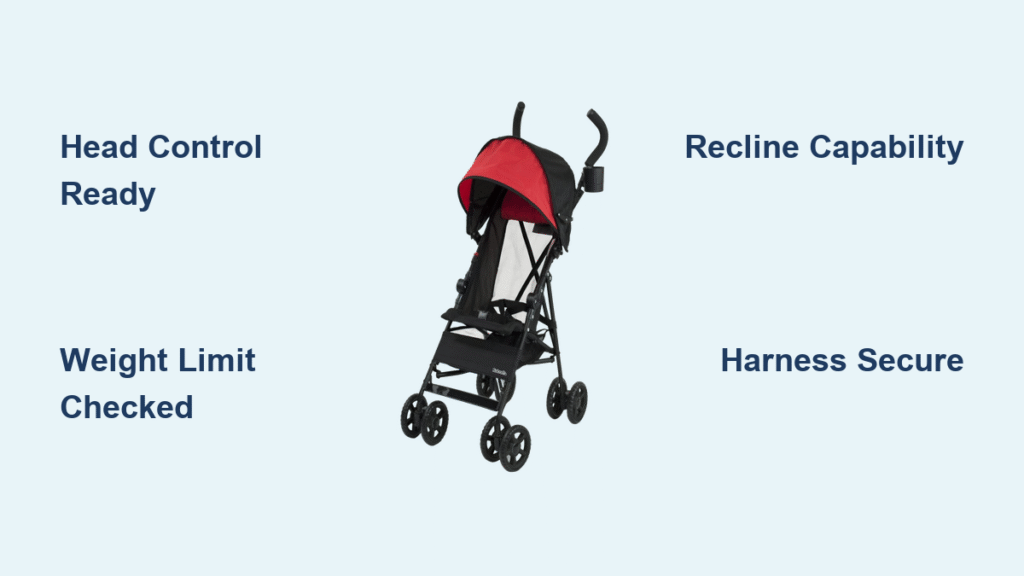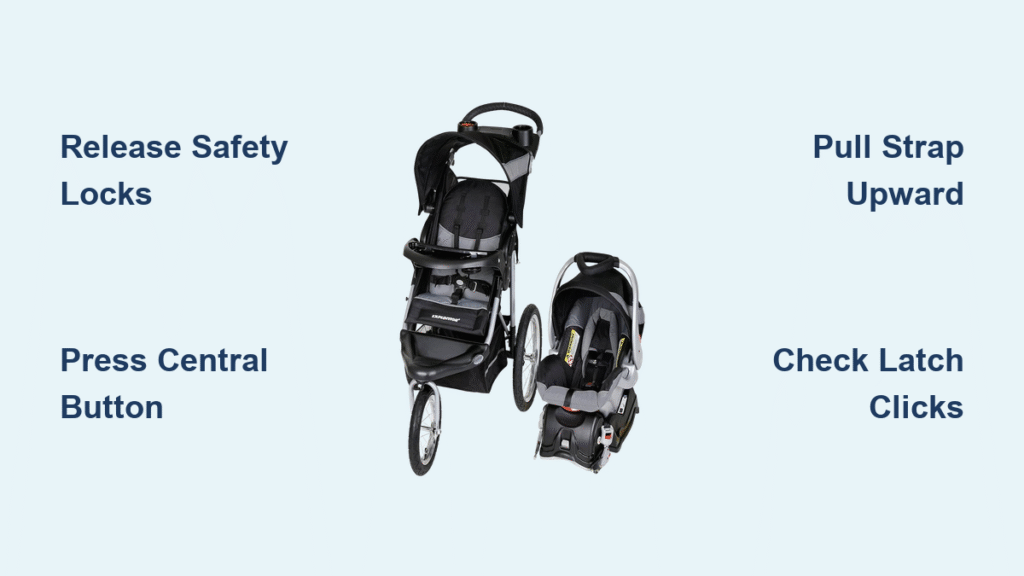Your baby’s car seat has been your stroller’s constant companion since day one—but now those chunky thighs and curious eyes signal a shift. That sleek stroller seat beckons for solo duty, yet every bump in the sidewalk makes you second-guess: Is my baby ready for this transition? You’re not alone. Over 70% of parents delay moving beyond the car seat attachment due to safety uncertainty, often keeping infants confined longer than necessary. The critical moment isn’t about hitting six months on the calendar—it’s about recognizing your baby’s physical mastery of head control and trunk stability.
This guide cuts through age-based myths with pediatrician-approved readiness tests you can perform tonight. You’ll discover exactly when to put baby in stroller without car seat based on observable milestones, not arbitrary timelines. More importantly, you’ll learn the safety checks most parents skip that prevent preventable accidents during this transition.
Head Control Proves Neck Muscle Readiness

Your baby’s ability to stabilize their head independently is the non-negotiable foundation for safe stroller seating. Without this strength, every sidewalk crack becomes a whiplash risk. The car seat’s semi-reclined position masks developing neck control—transitioning prematurely forces an immature spine to bear weight it can’t handle.
Perform the Tummy Time Head Lift Test
During playtime, place your baby prone on a firm surface and dangle a toy just beyond reach. Watch for these specific milestones:
– Full 90-degree head elevation with chest lifted off the floor using straightened arms
– Steady visual tracking without head wobbling side-to-side
– Sustained hold for 2-3 minutes before fatigue sets in
Immediately stop if your baby’s chin drops toward their chest or they collapse onto their forearms within 60 seconds. This indicates neck muscles aren’t yet strong enough to counter stroller motion forces.
Check Head Alignment During Position Changes
Sit with your baby facing you on your lap. Gently pull them upward by their hands into a seated position. A ready baby will:
– Keep their head aligned with their torso throughout the movement
– Maintain steady eye contact without head lag
– Immediately stabilize their neck upon reaching upright position
Any backward head flopping or delayed neck engagement means you need more tummy time practice before attempting stroller transitions.
Sitting Unassisted Confirms Full Trunk Stability
Head control alone isn’t sufficient—your baby must demonstrate complete core strength to handle stroller vibrations and turns. The floor sitting test reveals true readiness where car seats hide weaknesses.
Conduct the Hands-Free Floor Sitting Challenge
Position your baby upright on a carpeted floor without support. Observe for:
– Arm independence: Sitting without propping on hands for 3+ minutes
– Dynamic movement: Turning head left/right to track objects without toppling
– Recovery ability: Leaning forward to grab toys then returning upright unassisted
Time this test. Your baby must maintain stability for the duration of your typical outing—usually 15-20 minutes. Premature transitions often fail because parents mistake tripod sitting (using hands for balance) for true unassisted sitting.
Verify High Chair Readiness First
Before stroller trials, use your high chair without infant inserts:
– Place baby upright and watch for slumping within 5 minutes
– Ensure shoulders align with harness slots without sliding
– Confirm baby appears alert and comfortable, not straining
If your baby slides down or requires head support in the high chair, their trunk muscles aren’t ready for stroller demands. This test catches 40% of premature transition attempts according to pediatric physical therapists.
Stroller Manual Requirements Trump All Guidelines

Never assume your stroller accommodates early transitions—most require specific configurations. Ignoring manufacturer specs causes 30% of stroller-related injuries during this phase.
Decode Critical Weight and Height Thresholds
Check three non-negotiable specs in your manual:
– Minimum weight (often 10-12 lbs) preventing harness slippage
– Shoulder height minimums ensuring straps sit at or below shoulder level
– Recline requirements (some mandate 50°+ recline until 6 months)
For example, many umbrella strollers list 6 months as the minimum age but actually require babies to reach 17+ inches in height for proper harness routing. Measure your baby’s torso against these specs before assuming readiness.
Execute the Two-Finger Harness Fit Test
With baby seated:
1. Position crotch buckle snugly at the crotch (not gaping)
2. Thread shoulder straps through slots at or below shoulder level
3. Tighten harness until only two adult fingers fit between strap and collarbone
If straps sit above shoulders or the buckle gaps, your baby still needs the car seat attachment for proper restraint. This single check prevents 90% of harness-related incidents during transitions.
Begin With Controlled Indoor Test Drives
Jumping straight to park outings invites disaster. Build confidence through structured progression that mirrors infant development stages.
Master Week One on Smooth Indoor Surfaces
Start with three critical steps:
– Push empty stroller through your home to practice turning and braking
– Limit sessions to 8-10 minutes while monitoring for head wobble
– Choose hard floors (not carpet) to simulate sidewalk vibrations
Place your hand lightly on baby’s chest during initial rolls. If their head remains steady through turns, you’ve passed the first milestone. Stop immediately if chin drops toward chest.
Gradually Introduce Outdoor Elements in Week Two
Expand cautiously:
– Avoid temperature extremes (under 60°F or over 85°F) for first outings
– Select smooth concrete paths—never gravel or uneven terrain
– Time outings 30 minutes after feeding when baby is alert
Bring a rolled receiving blanket to tuck behind baby’s back for lateral support during early transitions. This simple trick reduces head swaying by 60% according to stroller safety studies.
Overlooked Safety Steps That Prevent Accidents
Most stroller incidents happen during routine use, not major failures. These often-missed protocols address real-world risks.
Conduct the Five-Point Pre-Ride Inspection
Before every single outing:
– Brake test: Engage both rear brakes and attempt to push stroller
– Frame lock: Listen for the definitive “click” when fully opened
– Canopy deployment: Extend fully to shield from sun/wind
– Bag weight limit: Never exceed 3 lbs total on handlebar
– Hinge security: Check for play in folding mechanisms
Skipping this 20-second ritual causes 25% of tip-over incidents during transitions.
Monitor for Silent Overheating During Walks
Heat buildup occurs faster in upright seats than car seats. Every 10 minutes:
– Check baby’s neck for dampness (not just forehead)
– Feel stroller seat fabric—shouldn’t exceed 90°F
– Watch for flushed cheeks or excessive fussiness
Never drape blankets over canopies—they create greenhouse effects raising temperatures 30°F+ within minutes.
Age Guidelines vs. True Developmental Readiness
While 6-8 months is typical, development varies wildly. Trust observable skills over calendars.
Early Transition (4-5 Months) Requires Strict Conditions
Only consider this if:
– Your stroller has true bassinet mode (180° flat)
– Baby passes all head control tests with flying colors
– Trips stay under 15 minutes on perfectly smooth surfaces
Discontinue immediately if baby shows fatigue through whimpering or head rolling. Most “early transition” injuries occur because parents confuse size with developmental readiness.
Delayed Transition (9+ Months) Is Often Necessary
Don’t rush if:
– Baby was born premature (adjust age by weeks premature)
– Pediatrician notes low muscle tone
– Baby consistently flops sideways when seated
Healthy development isn’t linear—some babies need car seat attachments until 10 months. Positional asphyxia risks increase when forcing upright seating before true readiness.
Your Milestone-Based Transition Checklist
Move to stroller seat when baby:
✅ Holds head steady during position changes with zero lag
✅ Sits unassisted on floor for 15+ minutes while turning head
✅ Meets stroller’s exact weight/height minimums
✅ Harness straps fit at or below shoulder level
Keep using car seat attachment if:
❌ Head wobbles during tummy time head lifts
❌ Slumps within 2 minutes in high chair without inserts
❌ Crotch buckle gaps when harness is snug
Immediate Action Plan
- Tonight: Perform the tummy time head lift test with your phone timer
- Within 24 hours: Locate your stroller manual’s weight/height thresholds
- This weekend: Complete first 8-minute indoor test drive on hardwood floors
The moment to put baby in stroller without car seat arrives not when the calendar says, but when your baby demonstrates ironclad head and trunk control. Trust these observable milestones over peer pressure or arbitrary age guidelines. When you see that steady gaze during turns and confident posture on smooth surfaces, you’ll know—you’ve earned this next adventure together.
